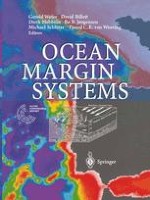2003 | Buch
Ocean Margin Systems
herausgegeben von: Professor Dr. Gerold Wefer, Dr. David Billett, Dr. Dierk Hebbeln, Professor Dr. Bo Barker Jørgensen, Professor Dr. Michael Schlüter, Dr. Tjeerd C. E. van Weering
Verlag: Springer Berlin Heidelberg
Enthalten in: Professional Book Archive
